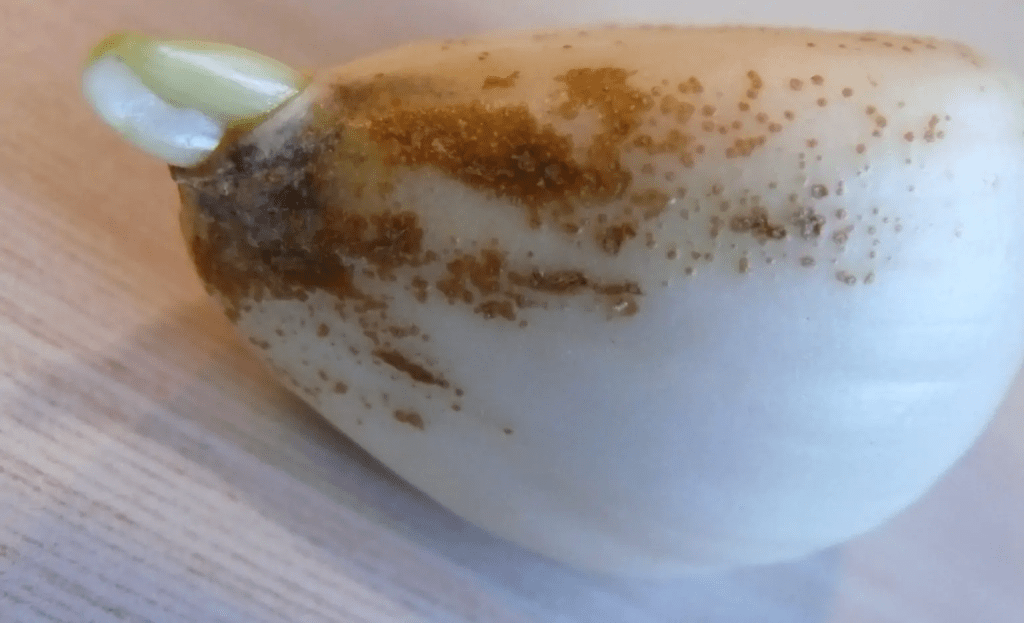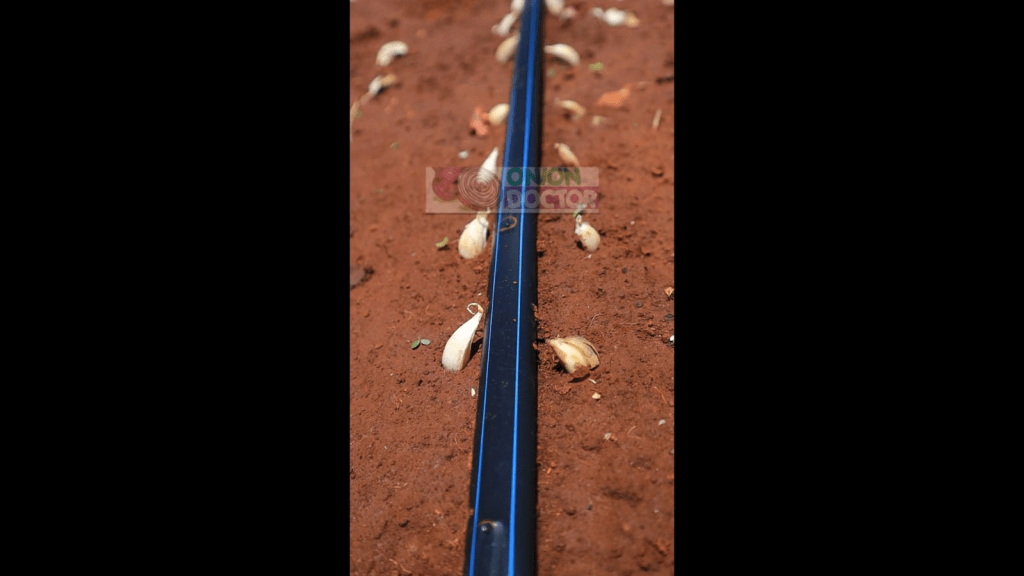Garlic farming in Kenya is a lucrative venture, offering smallholder farmers a chance to tap into a growing local and international market. With its high economic and medicinal value, garlic farming in Kenya has gained traction as a profitable agribusiness, particularly in regions like Nyeri, Nakuru, and the Central Rift Valley. However, garlic farming in Kenya faces significant challenges, including pests like bulb mites, which can silently devastate crops. At Onion Doctor, we are committed to empowering farmers with knowledge and solutions to succeed in garlic farming in Kenya. This blog dives into the world of bulb mites, their impact on garlic farming in Kenya, and practical strategies to manage them effectively, ensuring farmers maximize yields and profitability.

BULB MITES IN GARLIC
Bulb mites, primarily from the genera Rhizoglyphus and Tyrophagus (Acaridae family) and the dry bulb mite , are microscopic pests that pose a significant threat to garlic and onion crops. These pests are particularly problematic in garlic farming in Kenya due to their ability to thrive in warm, moist conditions and feed on bulbs, roots, and stem plates. Measuring 0.5–1 mm (Acaridae) or as small as 0.25 mm (Eriophyidae), bulb mites are often unnoticed until significant damage occurs.
CHARACTERISTICS OF BULB MITES IN GARLIC FARMING
- Acaridae Mites: Shiny, creamy-white, bulb-shaped, with brown legs, often found in clusters under the root plate of garlic bulbs.
- Eriophyidae Mites: Elongate, banana-shaped or wormlike, microscopic, with four legs near the head.
- Behavior: Both groups feed on germinating seeds, bulbs, roots, and tubers, surviving on decaying vegetation until it fully decomposes.
Their feeding damages the outer bulb tissue, creating entry points for pathogens like fungi and bacteria, which can lead to rot and desiccation during storage. In Kenya’s diverse climates, from the highlands to coastal regions, bulb mites can severely impact garlic farming in Kenya by stunting plant growth, reducing stands, and lowering yields.

IMPACT OF BULB MITES ON GARLIC FARMING IN KENYA
Bulb mites are a hidden menace in garlic farming in Kenya, often going unrecognized until it’s too late. Their impact includes:
- Stunted Growth and Reduced Stands: Early in the season, bulb mites feed on developing roots and stem plates, causing poor plant stands and stunted growth. Infested plants may be easily pulled from the soil due to weak root systems.
- Post-Harvest Losses: Feeding by bulb mites creates wounds that allow pathogens like Botrytis allii (bulb rot) and Aspergillus niger (black mold) to infect stored garlic, leading to sunken brown spots and desiccation.
- Yield Reduction: Heavy infestations can cause streaking and twisting of garlic leaves, reducing bulb size and overall yield. In severe cases, losses can be significant, especially in regions with cool, wet weather.

CONDITIONS FAVORING BULB MITES IN GARLIC
Bulb mites flourish under specific conditions, which are common in some Kenyan garlic-growing regions:
- Cool, Wet Weather: Slow plant growth in such conditions allows mites to cause more damage.
- Poor Crop Rotation: Continuous planting of garlic or onions in the same field enables mite populations to build up.
- Infested Seed Cloves: Using contaminated garlic cloves introduces mites to new fields.
- Decaying Vegetation: Mites survive on decomposing plant material, making fields with uncleared crop residues vulnerable.
Understanding these conditions is crucial for Kenyan farmers to implement preventive measures effectively.
EFFECTIVE MANAGEMENT STRATEGIES FOR BULB MITES
At Onion Doctor, we advocate for integrated pest management (IPM) to control bulb mites in garlic farming in Kenya. Here are proven strategies to mitigate their impact:
1.USE CLEAN TESTED SEED CLOVES
Planting clean, certified garlic seed cloves is critical. Hot water treatment (130°F for 10–20 minutes) before planting can eliminate mites on seed cloves. Onion Doctor provides high-quality, drought-tolerant garlic seedlings to ensure farmers start with pest-free stock
2. PRACTICE CROP ROTATION
Rotate garlic with non-host crops like mustard or sorghum-Sudan grass for at least four years to break the mite life cycle. Avoid planting garlic or onions after Allium crops, Brassicas, corn, or grass cover crops, as these can harbor bulb mites.
3. IMPROVE SOIL AND FIELD MANAGEMENT
- Decompose Crop Residues: Allow previous crop vegetation to fully break down before planting garlic to reduce mite habitats.
- Soil Testing and Preparation: Test soil for nutrient balance and pH (ideal: 6.0–6.8). Well-drained, loamy soils reduce mite-friendly conditions. Onion Doctor offers soil testing services to optimize soil health.
- Sanitation: Clean equipment and storage areas meticulously to prevent mite transfer.
4.IMPLEMENT DRIP IRRIGATIONS
Excess moisture promotes mite proliferation and fungal diseases. Drip irrigation, as opposed to overhead irrigation, minimizes soil moisture and reduces mite activity. Onion Doctor provides drip irrigation systems tailored for garlic farming in Kenya’s arid regions.

5.USE BIOFUMIGANT COVER CROPS
Planting bio-fumigant crops like mustard or sorghum-Sudan grass after garlic harvest can suppress mite and nematode populations. These crops release compounds that naturally reduce pest levels in the soil.
6. POST HARVEST HANDLING
- Proper Curing: Cure garlic bulbs in a well-ventilated, dry area for 3–4 weeks to prevent mite-induced rot during storage.
- Storage Conditions: Store garlic in cool, dry, dark, and well-ventilated spaces to minimize mite activity and pathogen spread.
Onion Doctor Limited: advises Kenyan farmers to tailor these strategies to local conditions and consult our experts for customized plans, including soil testing and pest identification and management services. Contact us for: Onion seedlings, Garlic seedlings, Germinated garlic cloves, Farm planning services, Soil testing, training on onion and garlic growing, Drip irrigation installation and maintenance, Agronomic support, Onion and Garlic value pack and Farm management. For free consultation, placing orders or booking a visit with an agronomist, please contact us via Call or what’s app +254703982228, Email: Info@oniondoctor.co.ke. You can also check out our social media handles for daily updates on TikTok: https://www.tiktok.com/@oniondoctorke?_t=ZM-8wmsTu0qumO&_r=1 Instagram: https://www.instagram.com/oniondoctorke?igsh=MTVoaHF3aWUydTJzaQ==Facebook:https://www.facebook.com/share/16SwgYn2dG/ Youtube:https://youtube.com/@oniondoctorke?si=u5Jnd-r0qU9UDYqL and Twitter: https://x.com/OnionDoctorKe?t=FR3JXlS_oN1vjjUgAtfyzg&s=09